Mentha suaveolens
Looking for a plant that combines ornamental beauty with a refreshing, fruity taste? Then have yourself a gander at the plant known as apple mint.
As an avid, near-pathological gum chewer, I personally discovered this herb with the enthusiasm of a child on Christmas. Menthol-flavored, with a fragrance of apple, AND it’s a plant I can grow right at home? Sign me up!
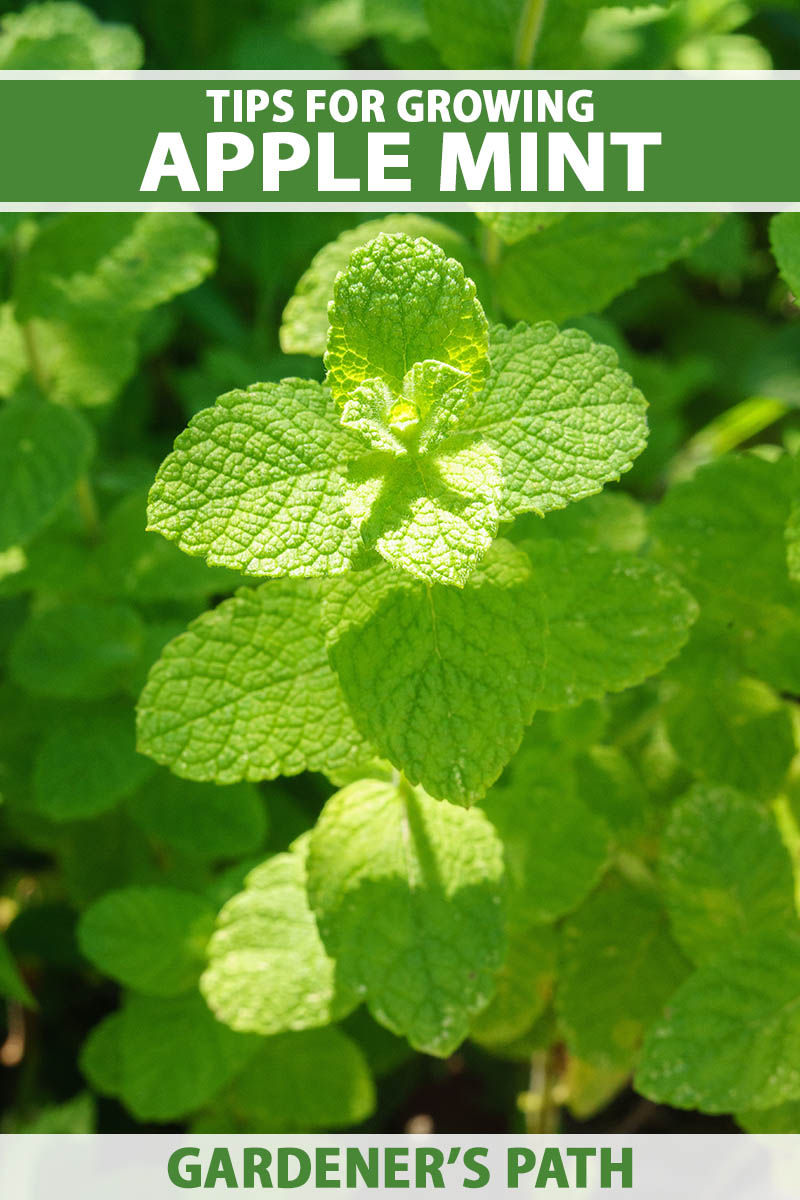
We link to vendors to help you find relevant products. If you buy from one of our links, we may earn a commission.
With one- to two-inch-long fuzzy green leaves, a two- to three-foot height, and white, pink, or purple flowers, this plant has the looks to match the substance.
M. suaveolens serves as a gorgeous ground cover, a delicious compliment to many cuisines, and it even attracts many beneficial pollinators. It’s easy to grow, simple to care for, and pays scrumptious dividends year after year.
There’s no question – this species of Mentha definitely deserves a spot in your herb garden.
Behold what awaits, herb enthusiasts:
What You’ll Learn
I’m pretty sure that’s everything we’ll cover. Hope I didn’t forget to mint-ion anything…
Cultivation and History
Apple mint, despite sounding like something Johnny Appleseed might have come up with, actually has a European origin. Hailing from the southern and western parts of Europe, this plant has been enjoyed by mankind for millennia.
Dating back to Ancient Greece, it was used as an herb for baths and for cleaning banquet hall tables.
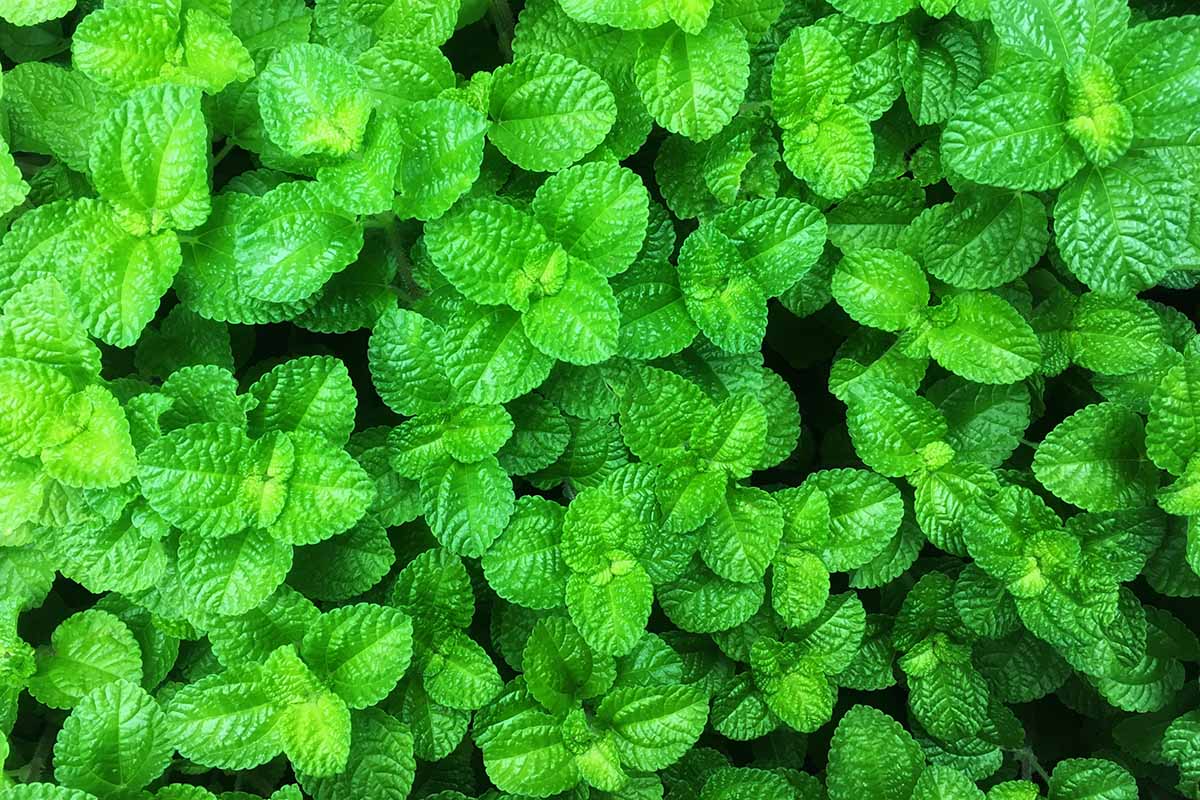
It’s been used as a strewing herb throughout history, or in other words, an herb that was “strewn” in important structures such as temples.
When people would walk through these buildings, they would step on and crush the strewn foliage, releasing a fragrance that repelled pests and made the air smell all sweet and apple-y.
Historically, it was also used as a medicinal herb in monasteries. The monks who dwelled there believed it provided relief from post-seizure fatigue. I suppose it was used enough to grant it the nickname “monk’s herb.”
In the modern day, apple mint is used for both edible and ornamental purposes.
Edibility-wise, it goes well with many foods and is used medicinally today in alternative health circles to treat inflammation, gastrointestinal problems, and fevers.
Ornamentally, it’s a great ground cover and accent planting for other species with differently-textured foliage.
Propagation
One thing to know about Mentha seeds: they’re absolutely puny. At 14,000 seeds per gram, they are very difficult to germinate. And given their propensity to cross-breed, the seeds you sprout might not look and taste like the M. suaveolens you were going for.

When it comes to M. suaveolens, vegetative propagation is the way to go. However, if the difficulty of growing apple mint from seed is a challenge that you’re up for, feel free to arm yourself with some seed-specific know-how here.
Plant seeds a quarter-inch deep, and be sure to thin seedlings to provide one to two feet of space between each.
When it comes to vegetative propagation, the two best methods are via root division and stem cuttings.
These are the techniques used by commercial growers, and they’ll definitely work for the home gardener. For a thorough breakdown of how to propagate this plant, check out our mint growing guide.
How to Grow
All right, it’s time to grow!

If you haven’t propagated vegetatively or via seed, but want to get some apple mint in the ground ASAP, Clovers Garden has live plants available for purchase from Amazon.
Climate and Soil
First, you want to ensure that you’re planting in USDA Hardiness Zones 5 to 9. Next, you must ensure that your M. suaveolens will receive full sun or partial shade wherever they’re planted.
A soil pH of 6.0 to 7.0 is ideal, along with a well-draining, loamy soil. Excessively rich soil can promote rust, interfere with mint oil production, and reduce leaf tastiness, so a super fertile soil is far from necessary here.
If your soil is particularly lean in nutrients, adding one to two inches of compost, manure, or peat moss to the soil before planting will be all you need.
Planting
Since it grows vigorously and oftentimes invasively, quarantining your apple mint from your other plantings will be a necessity.
This can be done by allotting them their own plot, or by growing them in containers sunk into the ground, with holes in the bottom for drainage.
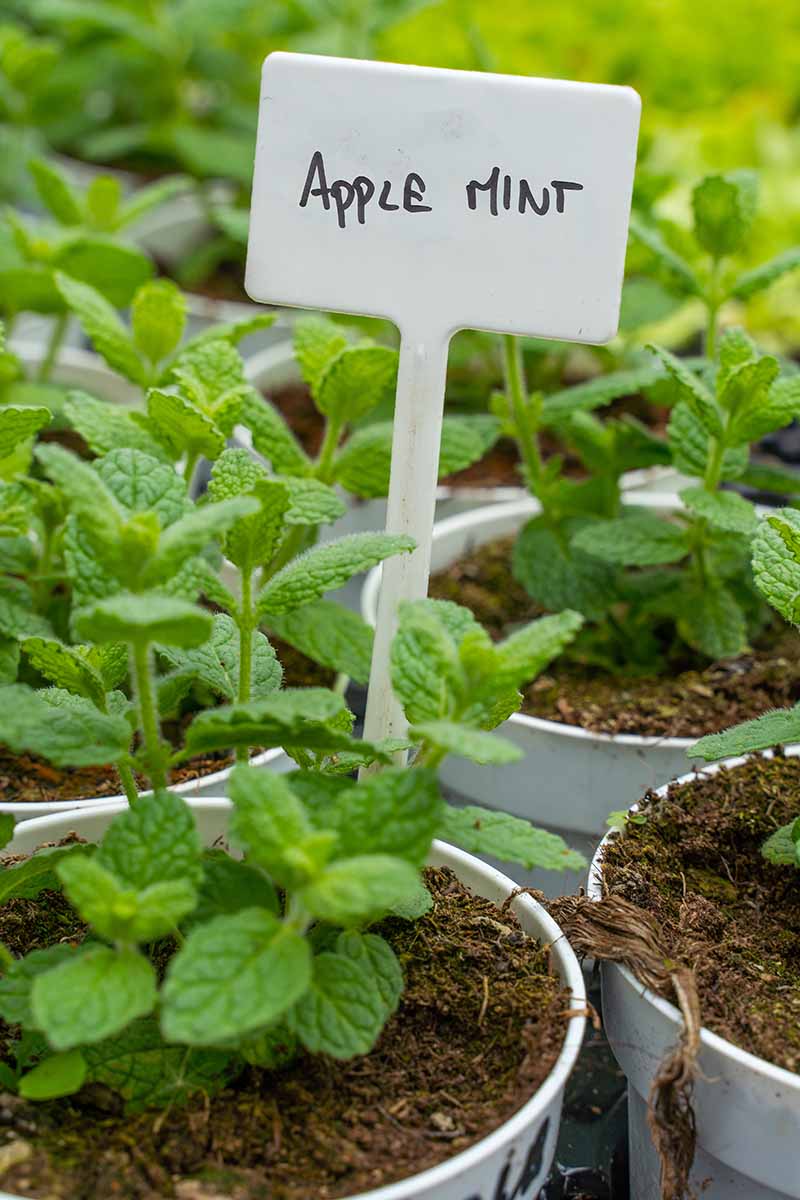
If you go with containers, they should extend three to four inches above the soil line and 10 to 15 inches below, in order to keep the plants contained.
Simply burying the roots just below the surface is all that’s needed when you’re transplanting, with a foot or two of space in between each plant.
Water and Fertilizer
Apple mint needs its soil kept constantly moist. Not soggy – that could cause disease. Think Goldilocks: not too little, not too much, just right.
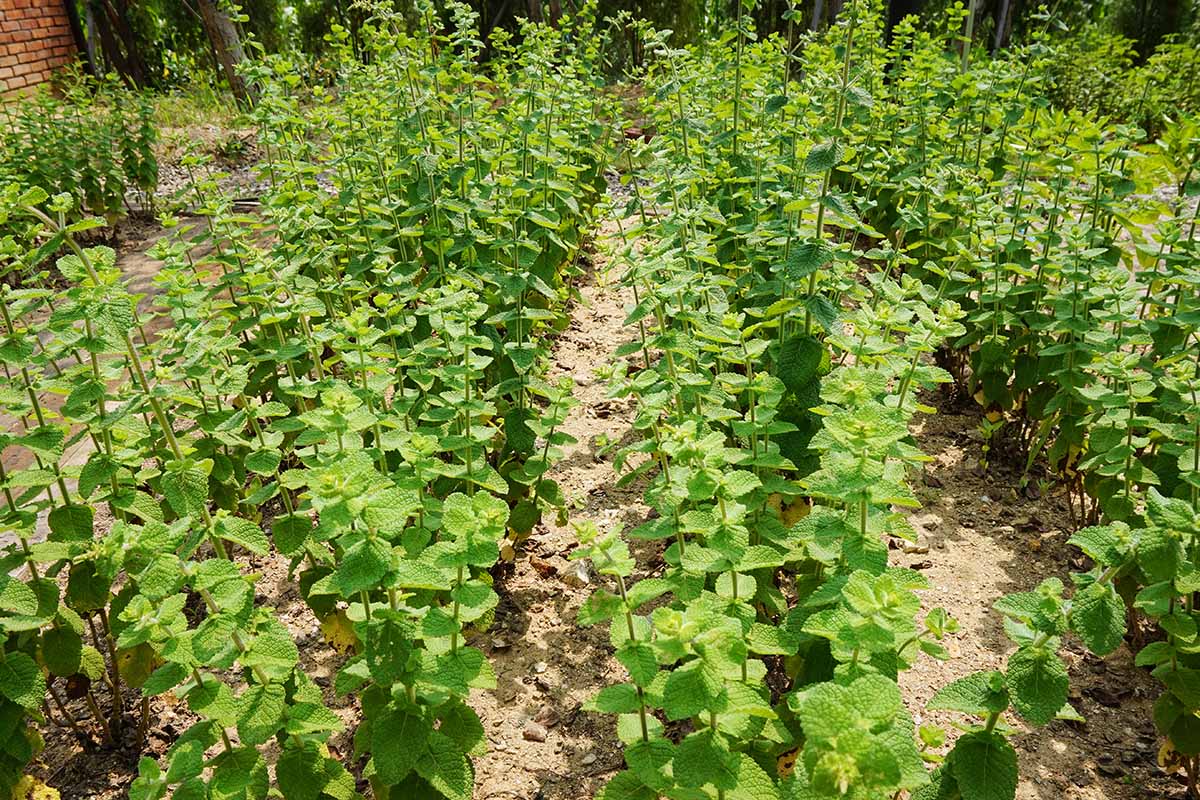
Starting the day with hydration by watering in the morning is ideal. If the foliage wilts or the top inch of soil feels dry, more water is needed.
A regular, bordering-on-neurotic routine of checking for dryness will ensure that your plants will never stay dry for unhealthy stretches of time. Mulching lightly around plants can also help to retain moisture.
For weary gardeners looking for a complete break from fertilizing, I have some bad news. Mint does need a little fertilizer, but a once-a-year fertilization in the springtime should be all that’s needed.
One teaspoon of slow-release 16-16-16 fertilizer per plant should do the trick, worked into the top six inches of soil.

Garden Naturals All Purpose Fertilizer
Need fertilizer that meets these requirements? Garden Naturals has some for you on Amazon.
Growing Tips
- When you do use fertilizer, work it into the top six inches of soil.
- If desired, take advantage of this plant’s aggressive growth and use it as a ground cover for covering up that unseemly, difficult-to-cultivate terrain!
- A light mulch can help retain moisture in hotter, sunnier climates.
Maintenance and Pruning
The maintenance you give your apple mint plants depends on what you’re growing them for.
If you like them for their blooms and want them to attract beneficial pollinators, congratulations! You’re on Easy Street. Just kick back, relax, and let them flower.

However, flowering reduces flavorful oil content and makes the leaves less tasty.
If delectable leaves and stems are the goal, pinch the blooms or cut back the plants an inch above the soil two to three times a year to keep your apple mint bushy and tasty. Have no fear: they can take all that pruning.
Remember that this is a creeping, rhizomatous plant. If you haven’t taken steps already to control its spread, like planting in containers sunk into the ground, you may find yourself digging it out of unwanted areas of the garden regularly.
Regardless of your growing objectives, cut them down to ground level before the first hard freeze each winter, in order to discourage pathogens and pests.
Cultivars to Select
There aren’t as many notable cultivars of M. suaveolens as there are for other species of Mentha. Hardly any, in fact.
Other than your standard apple mint, there is a specific variety worth mentioning: M. suaveolens ‘Variegata,’ aka ‘Pineapple’ or pineapple mint.
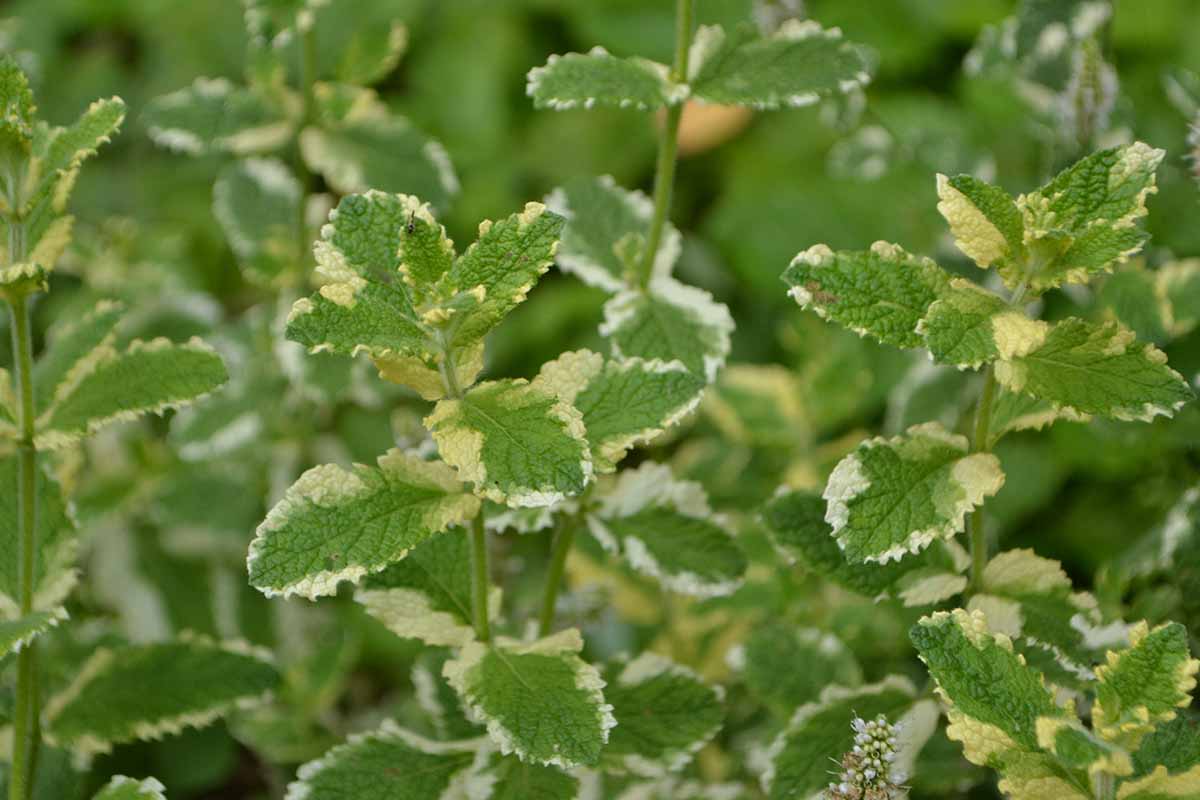
The unique name comes with a unique look. Instead of the solid green foliage you’ve come to know and love, the average ‘Variegata’ leaf has variegated, creamy white edges.
I say “average” here because a few leaves may be all white, a few all green, and the rest will have mixtures of white and green in varying proportions.
A funny thing about variegation, though, is that variegated sections of plant tissue contain less chlorophyll than non-variegated sections. This means variegated tissues grow less than their all-green counterparts.
If you want to prevent your pineapple mint from looking like plain ol’ apple mint, cut back the green-leaved stems to keep them from vigorously outgrowing and snuffing out the variegated foliage.
Variegated tissues are also very sensitive to sunlight and susceptible to sunburn, so give ‘Variegata’ partial shade. If full sun is all you’ve got to work with, this can work in a cool climate. Full sun + hot climate = leaf burn.
Interested in growing variegated pineapple mint? Burpee has the seeds for you.
Managing Pests and Disease
Thankfully, herbivores don’t pose a threat for this herb, although it is vulnerable to some insects and diseases.
Because this is a species of mint, it does share similar pest and pathogen vulnerabilities with the rest of the Mentha genus.
Be sure to give our mint article a look-see for a more in-depth examination of the pests and diseases that plague M. suaveolens, such as aphids, anthracnose, and the like.
Harvesting and Preservation
Apple mint can be harvested all season long, as soon as the plants start to leaf out. The leaves and sprigs are what you’re harvesting here. Youth and smallness make for the tastiest leaves.
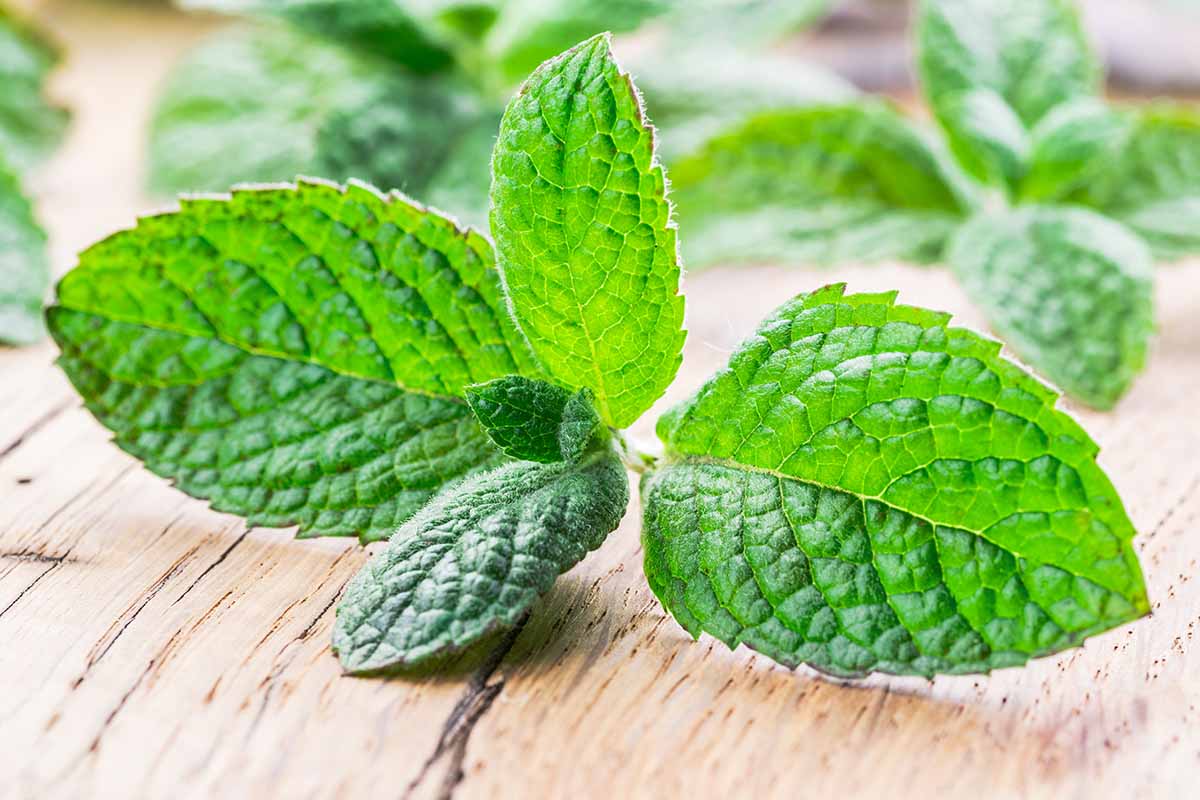
Ideal harvest time is just before flowering, late in the morning, and on days when it’s sunny and dry. This is when the oils that give the plant its deliciousness are at their peak, and it’s your time to strike!
Remove the leaves with your fingers – i.e. digitally – or en masse with a shearing implement for later plucking from the stems, if you so desire.
After harvest, rinse what you’ve picked and pat dry, or wait to wash until just before using. Submerge the cut ends in water and place in the fridge, where they’ll last for up to a week to be used fresh.
For longer-term storage, you have some options.
To air-dry, bind the stems in a bundle and leave them in a brown paper bag. Keep the bag in a cool, dark place for about 14 days. After that, remove the dried leaves from the stems and keep them in a sealed container in cool, dark conditions.
You can dry them in an oven or food dehydrator, too. Place the herbs on top of a parchment paper-covered baking sheet or drying rack and bake at 100°F, or the lowest available setting. Bake until the plant gets brittle and starts to crumble with ease.
Learn more about drying herbs in our guide.
Freezing is another valid choice. Spread the harvested, washed, and dried leaves on a baking sheet and freeze for half an hour. After that, put the frozen leaves in air-tight and dated freezer bags for longer-term freezer storage.
Cooking Ideas
This plant is a very versatile herb and can be enjoyed in many delicious foods and beverages.

It’s wonderful with freshly cooked meats and vegetables. Lemonades and teas get a nice zing from the addition of apple mint. And it’s a great compliment to potatoes, fruits, and salads, as well!
Want some recipes to try? Check them out on our sister site, Foodal.
Quick Reference Growing Guide
| Plant Type: | Perennial herb | Maintenance: | Low |
| Native to: | Southern Europe, Western Europe, Western Mediterranean | Tolerance: | Herbivores |
| Hardiness (USDA Zone): | 5-9 | Soil Type: | Loamy |
| Season: | Spring-fall | Soil pH: | 6.0-7.0 |
| Exposure: | Full sun to partial shade | Soil Drainage: | Well-draining |
| Time to Maturity: | 2 months (harvest), 2-5 years (full) | Attracts: | Bees, butterflies, other pollinating insects |
| Spacing: | 1-2 feet | Companion Planting: | Fine or coarse-textured plants, broccoli, tomatoes |
| Planting Depth: | 1/4 inch (seeds), depth of root ball (transplants) | Avoid Planting With: | Potatoes |
| Height: | 2-3 feet | Uses: | Ground cover; herb, fragrance, and pollinator gardens |
| Spread: | 1-2 feet | Family: | Lamiaceae |
| Water Needs: | Moderate to High | Genus: | Mentha |
| Common Pests and Diseases: | Aphids, spider mites; anthracnose, powdery mildew, rust | Species: | Suaveolens |
I Mint To Write A Better Pun Than This
Hopefully, I’ve effectively conveyed the unbridled awesomeness of apple mint.
Whether it’s planted for beauty, taste, or fragrance, this plant will make any herb garden or container a focal point of appetizing aesthetics.
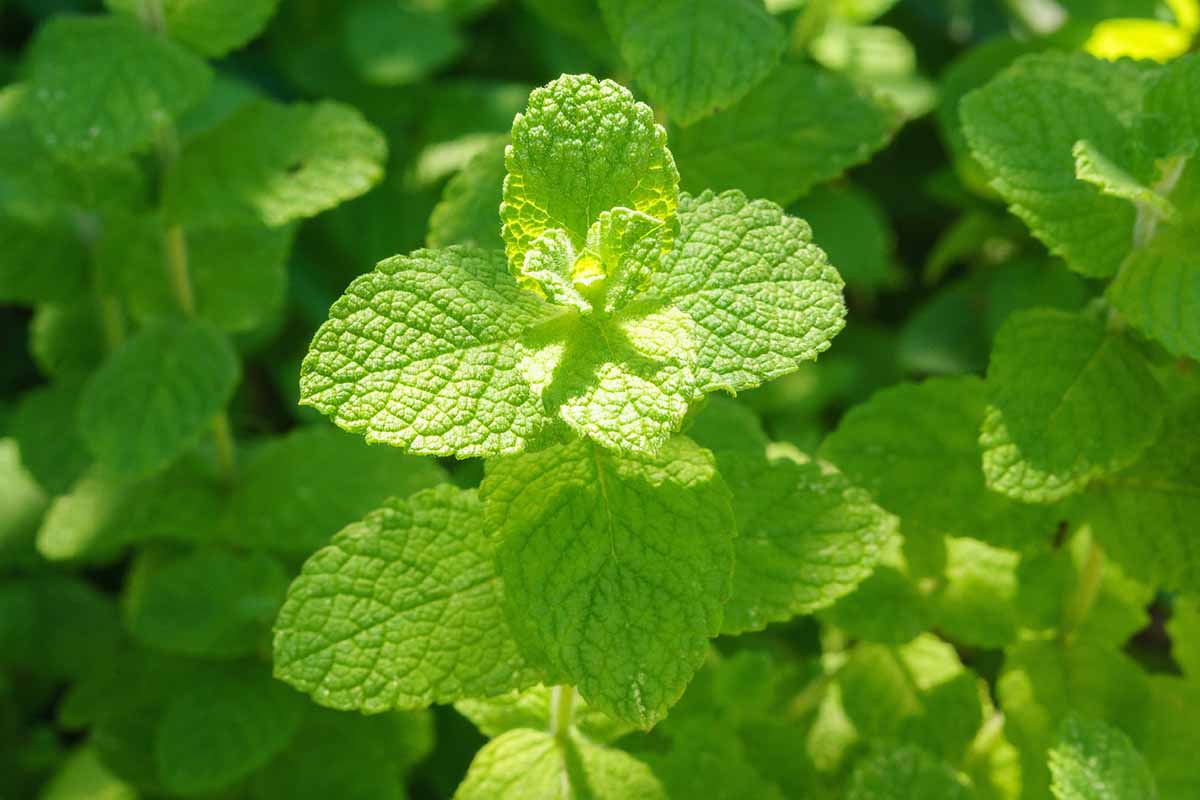
Have questions? Concerns? Experiences of your own to share? Post them in the comments section below! I’d love to read and respond to them!
If you enjoyed reading up on M. suaveolens, here are some other mint guides to peruse at your leisure:
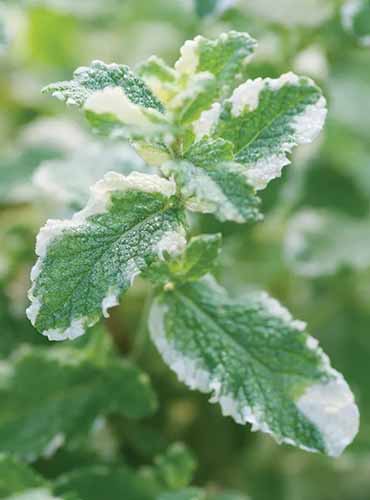
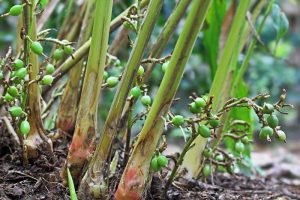
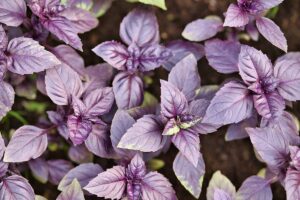
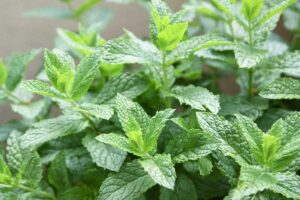
I grow my plants in containers. Should I bring them inside and keep them in the dark basement during the winter? Will they go dormant and then revive in the spring? Or are they hearty enough to survive the winter of PA?
Hey, Tina! Given that apple mint is hardy to your area, you don’t have to, but you could. When grown outdoors, apple mint usually dies to the ground in winter, but then comes back the following spring.